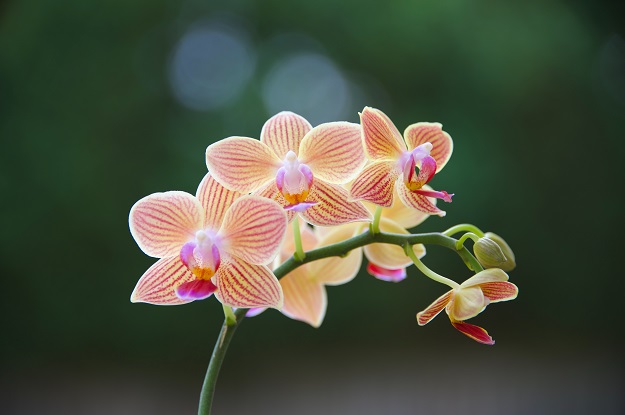
Orchid Culture
Growing orchids is very different from growing other houseplants. Most orchids that grow in their natural environment are not rooted in soil. Thick roots of orchid plants attach themselves to trees and branches. Nutrients and water are absorbed from the air, rainfall, and trees. If rain is scarce, they adapt and store water in their leaves, roots, and stem.
Orchid Growing Medium
When orchids are grown as indoor plants, they are planted in growing mediums, typically bark chips, charcoal chips, coco fiber and stones. This allows water to drain quickly, while keeping the orchid root well aerated. Another popular medium for growing orchids is fresh pine bark that has been mixed with peat or vermiculite. Pebbles and bark may also be used.
Planting Orchids
Fill the pot 2/3 full of the growing medium you have chosen and place the orchid in the pot. Spread the roots while making sure the growing tip is centered but do not let it touch the pot’s rim. Fill the pot with grow medium and pack tightly to hold the orchid in place. You should be able to turn the pot upside down without the orchid coming loose. Repot every two years or when the orchid outgrows the pot. When this happens, new shoots will grow over the edge of the pot. This is an excellent article that explains the best times and ways to repot different orchid varieties.
Temperature
Orchids are classified in categories of cool growing, intermediate, and warm growing. These categories specify the minimum temperature the orchid prefers during nighttime in the winter months. Cool growing orchids prefer winter nighttime temperatures to be around 50 degrees Fahrenheit. Intermediate prefer 55 degrees, while warm growing like temperature to be approximately 60 degrees. Most orchids do not do well in an environment that exceeds 90 degrees Fahrenheit.
Light
Light is an important factor in the blooming of orchids. Requirements of light vary with each individual orchid plant. Many orchids prefer partial shade and do well outdoors or in a greenhouse/terrarium. In winter, four hours of light is the minimum required. If there is not that amount of natural sunlight available, use fluorescent grow lights. This article explains how to tell how much light an orchid needs.
Water
Water is also an important factor when growing orchids. Do not water orchids on a fixed schedule. Deep water once a week and allow the medium to dry well before watering again. If orchids are suspended in the air in pots, they will dry out more quickly than those grown on a bench or table. This will cause them to require water more frequently. Orchids that are grown in bark will also need to be watered more often than those grown in other mediums.
Fertilizer
Orchids don’t need much fertilizer to remain healthy and bloom. Use a soluble 20-20-20 plant food or orchid fertilizer of 30-10-10 and never fertilize more often than every 30 days. Apply fertilizer instead of a normal watering and use only half of the recommended rate. If you apply fertilizer or water too frequently, your orchids will die.
Provided by Mykindaliving.com.




Comment here